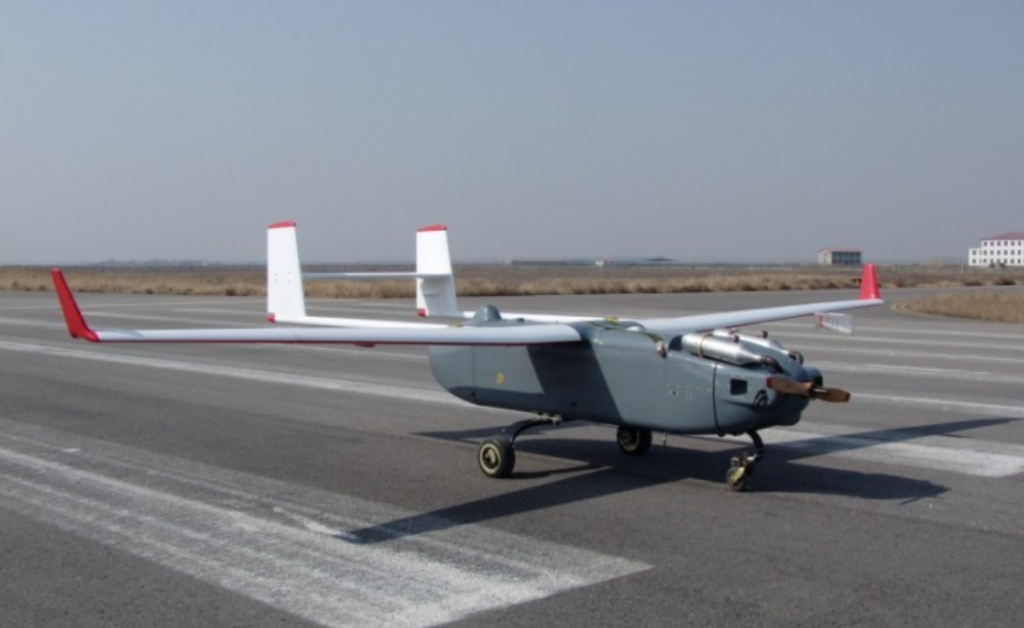
THE RUNDOWN
In February, Der Spiegel, a German news outlet, published an article reporting that a Chinese company intends to manufacture and deliver 100 prototype drones to Russia. According to the report, the drones are capable of carrying a 66-121lb warhead. A munition of this size, such as a 120mm high explosive round, has an effective burst radius of 75 meters (246 feet) against dismounted troops and non-armored vehicles. It would also be effective against armored vehicles and bunkers by damaging optics and communications equipment, degrading the ability to talk to each other or accurately fire weapon systems.
Strike Source conducted an OSINT investigation into the company behind the drones, Xi’an Bingguo Intelligent Aviation Technology Co., Ltd. (XBIAT).
The company is based in Xi’an, which is the capitol of Shaanxi Province in China. In March 2017, XBIAT was founded with a registered capital of 50 million yuan, which is about 7.1 million U.S. dollars. The company was founded by, and is currently owned by, Ma Jingdong. He serves as the general manager and executive director. He is also the owner and founder of Xi’an Bingguo Innovation Aviation Technology Company (founded in 2022 with a 50 Million RMB valuation), Xi’an Bingguo UAV Technology Service company, Xi’an Bingguo Computer System Company, and Beijing Bingguo Intelligent Technologies. Through this satellite of companies, Jingdong has connections to the PLA, various Chinese policing entities, and a state-controlled Research Institute. This particular institute holds a patent on applying a “fish swarm” algorithm to the flight control parameters for a group of quadrotor drones.
The specific drone identified in the original report is the ZT-180, a prototype drone developed by Bingguo Intelligent Aviation Technology. While this drone isn’t publicly available for sale on XBIAT’s website, Strike Source was able to find the specifications of the ZT-180.
We assess with moderate confidence that the ZT-180 is a loitering munition drone which can be controlled through a radio or cell signal. It is a low cost drone, which is quickly deployable at the tactical level. It is 2.8 meters (9 feet) in length with a slightly smaller wingspan at 2.6 meters. It can fly at a maximum of 43 meters per second, but is also able to loiter over a target area at a slower speed. Its maximum range is 1800 kilometers; as a one-time use-guided munition it has no need to return to the controller’s location. This range is affected by the payload, with the maximum payload being 34 kg (75 lbs) without significantly degrading the performance of the flight mechanism.
XBIAT has a history of developing, producing, and selling drones to the Chinese military and police forces. The U.S.-based China Aerospace Studies Institute found that, “Xi’an Binguo Intelligent Aviation Technology develops and produces a full range of multi-functional UAVs. The company was chosen as one of the top ten innovative enterprises of the 5th Military-Public Technology Promotion Conference Application Promotion Conference for its innovative UAVs. Binguo Intelligent Aviation Technology also signed a strategic cooperation agreement in November 2018 with the Shenzhen Defense Cloud Technology Co., Ltd.”
While XBIAT has not been sanctioned by the U.S. Treasury Department, similar Chinese companies which produce drones and drone parts have recently been sanctioned. The 5 blacklisted companies were in violation of international sanctions because of their sales to an Iranian firm. The Iranian company purchasing the drone parts produces the Shahed-136, which is the drone used by Russian forces against Ukraine.
THE TAKEAWAY
The first major implication of the potential sale of Chinese drones to Russia is the continued use of precision guided munitions against civilians in Ukraine, as seen in the March 9th, 2023 attacks. These attacks used both drones and ballistic missiles to attack civilian infrastructure. Ukrainian defense forces claim that 8 Shahed-136/131 were used during this particular assault. Russian commanders on the ground, who approve these attacks, don’t particularly care where the drones are built. They use them because they are effective, inexpensive, and available.
The second major implication is that these sales are directly opposite to what the Chinese public affairs spokesperson for the PLA has been saying. This is an example of one of two things; the Chinese government is not aware of the sale of cutting edge technology to its neighbor to the north or, the Chinese government knows what is happening and is blatantly denying it in the hope that it will be forgotten in a few news cycles.
The third and final implication is that China is supplying Russia in a similar way to Germany supplying Spain during the 1930’s Spanish Civil War. China gains invaluable information about the effectiveness and best tactics for using armed drones at the tactical level without having to put its own personnel in the trenches.
